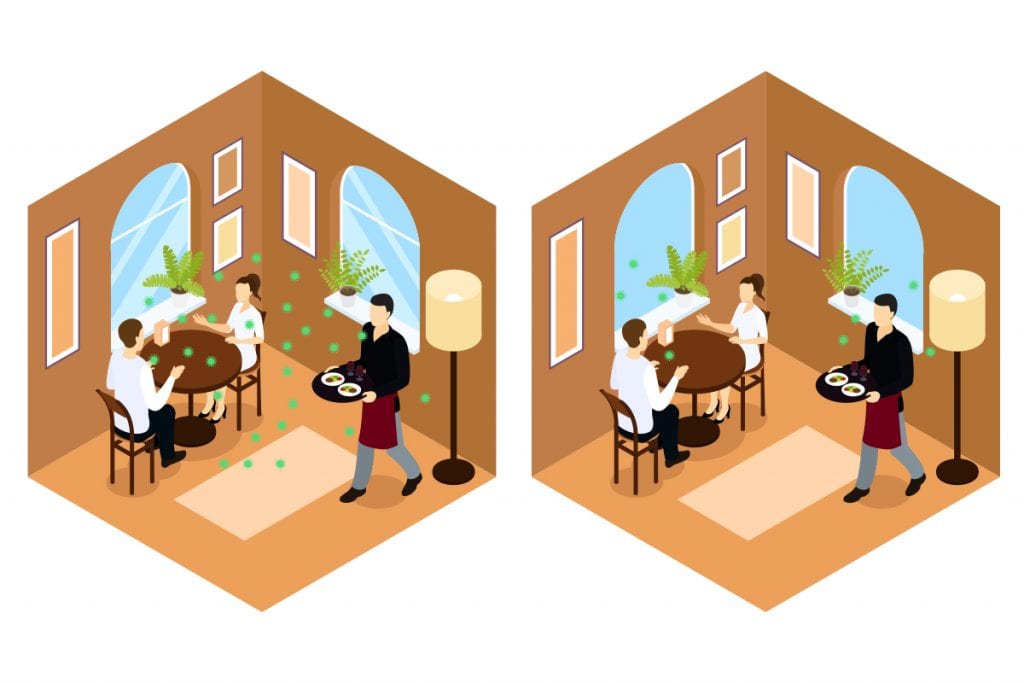In July, the World Health Organization (WHO) updated its COVID-19 guidance to include the possibility of “aerosol transmission”, especially in crowded and poorly-ventilated indoor locations. More evidence of this appeared in the form of a study from the University of Florida last month, which isolated live coronavirus in microscopic particles traveling more than six feet away from infectious individuals, which has been the standard for social distancing guidelines.
So what are aerosols and how do they help spread coronavirus?
Aerosols are microscopic droplets of fluid that can linger in the air for minutes to hours.
In the context of COVID-19, aerosols can be generated from the evaporation of respiratory droplets exhaled by infectious individuals. They are smaller than 50 microns in size (smaller than the diameter of a hair) and can carry SARS-CoV-2 through the air, potentially spreading the virus when inhaled by nearby individuals.
What’s the difference between respiratory droplets and aerosols?
Back in the spring, the WHO and CDC established that the primary means of transmitting COVID-19 is via respiratory droplets- small bits of saliva or respiratory fluid expelled by infectious individuals when they cough, sneeze, or talk. Normally, these respiratory droplets are large, visible, and can travel no more than 3-6 feet before falling to the ground. However, there have been reported cases of COVID-19 outbreaks in restaurants, nightclubs, and buildings even when social distancing is enforced.
The main difference between respiratory droplets and aerosols is size. Aerosols are far smaller than respiratory droplets and cannot be seen by the naked eye. Their microscopic size allows them to float in the air for hours, long enough to spread throughout a room and be inhaled by others.
Infectious aerosols also behave differently, and less predictably, than droplets. While respiratory droplets travel like cannonballs- shooting out from your mouth in the direction that you’re facing until they hit something or fall to the ground, aerosols behave like smoke- dispersing through the air, spreading out, and getting picked up by nearby air currents. In closed spaces that are poorly ventilated, aerosols carrying the coronavirus can build up in the air and pose a significant risk to people in the vicinity.
But while the chance of encountering aerosolized coronavirus particles is high, they are not as contagious as respiratory droplets. According to the CDC, it usually takes about 15 minutes of close proximity to a COVID-19 infected person for infection to occur.
Protect yourself from aerosols
Ventilation is key. Opening windows allows outdoor air to come inside and carry aerosols out, minimizing the risk of transmitting the virus. Installing HVAC systems with proper filtration (MERV-13 or greater) also helps trap and filter out infectious particles.

For individuals, it’s important to keep face masks on whenever possible, even when socially distancing from others. After all, the six-feet standard was established for avoiding respiratory droplets but we now know that aerosols can carry coronavirus further than that.
